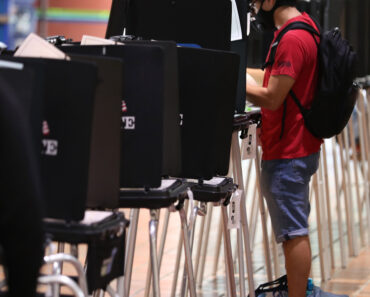This post was originally published on this site
This is the web version of Business x Design. Sign up here to get it in your inbox.
Welcome to Business x Design, a new newsletter on the power of design. In this email, Clay Chandler considers the fashion industry’s efforts to push a sustainable agenda. What else would you like to see from us? This newsletter is a work in progress supported by you, our readers. Reply to this email with your suggestions and feedback.
I am not a “fashionista,” as friends and colleagues readily will attest. But I confess experiencing a guilty pleasure in perusing swank luxury magazines and websites, including Fashionista.com, where a recent headline caught my eye: “2019 Was the Year Sustainability Finally Burst into the Fashion Mainstream.”
The accompanying post cites myriad examples of how this year the “sustainability conversation” in the fashion industry moved “from the margins to the mainline.” Among them: Gucci declared it would go go carbon-neutral; Kanye West launched a sustainability drive at Yeezy; LVMH and Kering are duking it out to prove which house is more environmentally responsible.
Fashionista.com’s Whitney Bauk says the newfound passion for eco-fashion burst into view during the Spring 2020 show season (which, for the uninitiated, took place in the fall of 2019). She observes that “more designers than ever” seem keen to be green—or at least keen to be seen as green.
I take this shift with a shade of jade. Haute couture is notoriously wasteful. Its lavish sets and pricey costumes tend to wind up on rubbish tips. And then there’s its customers’ carbon contrails.
In an earlier post, Bauk notes the surreal fact that this year’s fashion week coincided with climate strikes in Paris, a United Nations climate summit in New York, and raging fires in the Amazon rainforest. She highlights a photoshopped collage by French writer and artist Thomas Lelu superimposing the viral image of Jennifer Lopez’s closing moment in the plunging “jungle green” dress she wore at the Versace show Milan in front of a phalanx of French climate strikers protesting deforestation.

Just Jenny from the block—in a $9,325 frock!
It’s easy to poke fun at the luxury fashion industry. For years a host of smaller designers—among them Stella McCartney, Eileen Fisher, and Spencer Phipps—have shown it’s possible to make beautiful clothes without making the planet an uglier place.
In Hong Kong, where I’m based, textile giant Esquel has worked to make the apparel supply chain more environmentally friendly. The group recently unveiled a state-of-the-art production facility in the southern city of Guilin which uses natural dyes and organic cotton production.
Designers from other sectors, too, are tackling sustainability challenges. Star designers including Tony Fadell, Daan Roosegaarde, and Bill McDonough were among the most compelling speakers at the Fortune Global Sustainability Forum in Yunnan, China. As I noted last week, architects like Japan’s Kengo Kuma have explicitly rejected the “arrogance” of modernism in favor of more modest, environmentally friendly design strategies. Foster + Partners this month announced a sustainability manifesto pledging to go beyond environmental certification schemes required by the Paris climate accord.
The key to all these efforts is that designers must move beyond “greenwashing” to methods that not only “maintain” and “sustain” the planet, but also make it a better place. As McDonough puts it, it’s time for designers to put down their mops and pick up a paint brush.
Clay Chandler
@ClayChandler
Clay.Chandler@Fortune.com



